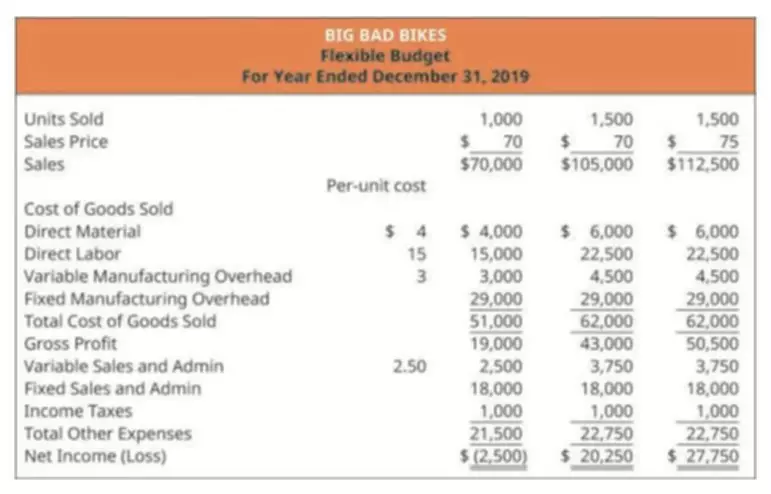Content

Once they’ve received their schedule k-1, investors then use the information to figure out how much of their income is taxable and how much tax they owe on their income tax return . Say a partner contributed $20,000 in cash to the business, as well as real estate property for business operations worth $50,000. When the partner receives their Schedule K-1, it states that their share of business profits for the year was $15,000. This means that this partner’s total basis for the partnership would be $85,000. Generally, the partnership itself is not liable for taxes on income generated by the business. Instead, each partner is subject to those income taxes based on their ownership percentage in the business. However, the partnership is responsible for filing the Form 1065, which is the information-only tax return.
- K-1s are necessary because most venture funds are “pass-through” entities, meaning they pass profits and losses to their investors.
- You need to file a tax extension so you don’t have any problems with the IRS.
- If you receive a Schedule K-1, you’ll need to use the information on it to complete and file your personal income tax return.
- LendingTree is compensated by companies on this site and this compensation may impact how and where offers appear on this site .
It is the partner’s responsibility to consider and apply any applicable limitations. See Limitations on Losses, Deductions, and Credits, later, for more information. One of the main tax benefits of electing a pass-through business structure is avoiding double taxation.
Indicate the tax year in question.
Let’s say you’re a partner in a company that earns $50,000 of taxable income in a given year. If you and your one business partner each own 50% of the business, you should each receive a Schedule K-1 that declares $25,000 of income. For one partner who owns 40% and another who owns 60%, the former will receive a K-1 for $20,000 and the latter for $30,000. However, the distribution will not be subject to any self-employment taxes.
- If you are owed a K-1, you’ll likely receive it after your other tax forms.
- A K-1 is commonly issued to taxpayers who have invested in limited partnerships and some exchange traded funds , such as those that invest in commodities.
- While there may be significant savings under the pass-through allowance, there are many stipulations that dictate which businesses and what sorts of income qualify.
- For trust and estate beneficiaries, limited partners, and passive investors, Schedule K-1 income is more akin to unearned income.
- When a partnership files Form 1065 with the IRS, outlining its financials, it must also prepare a Schedule K-1 for each partner to reflect their share of any profits or losses or distributions from the business.
- Schedule K is used to report income or losses from a business, profession, or farm.
Schedule K-1 is an Internal Revenue Service tax form issued annually for an investment in partnership interests. The purpose of Schedule K-1 is to report each partner’s share of the partnership’s earnings, losses, deductions, and credits.
What Deductions Can I Claim With A Schedule K-1?
The IRS requires each partnership, S corporation and estate or trust to file a Schedule K-1 tax form annually. The profits, losses, deductions and credits on a given owner’s form are allocated based on their ownership stake in the business. This stake determines the owner’s “tax basis” in the business — that is, the amount that a partner has invested in it. K-1 items are transferred to the personal tax return of the shareholder or individual partner.
Why Did I Receive a Schedule K1 and What Do I Need to Do With It?
If you are a part owner in a pass-through entity, you will receive a Schedule K-1 for your share of the business’s income, deductions, and credits. You will need to include the information provided to you on your own tax return.You must report the information exactly as it is given to you because it was also sent directly to the IRS when the form was generated by the pass-through. The IRS will expect this information to match their records. If you believe your share of the entity’s income or loss is calculated incorrectly, you should contact the pass-through entity directly to request a corrected K-1.
If you entered the partnership after the beginning of this year’s reporting period, you’ll enter the percentages that applied to you when you entered in the ‘Beginning’ column. If you left the partnership before the end of the reporting period, you’ll put the percentages that applied to you when you left in the ‘Ending’ column. https://www.bookstime.com/ will show you your self-employment earnings from the partnership or LLC you’re a member of. Form 1099-NEC is an Internal Revenue Service form for businesses to report payments made to nonemployees, such as independent contractors.
Bottom line on Schedule K-1
Pass-through EntityThe pass-through entity can be defined as a process by which any organization is relieved from double taxation burden. In order to avoid the double taxation, business income is considered to be the personal income. ShareholdersA shareholder is an individual or an institution that owns one or more shares of stock in a public or a private corporation and, therefore, are the legal owners of the company. The ownership percentage depends on the number of shares they hold against the company’s total shares.
Part II requires that you identify the shareholder’s name and identifying number, as well as the share of that shareholder’s stock ownership. LendingTree is compensated by companies on this site and this compensation may impact how and where offers appears on this site . LendingTree does not include all lenders, savings products, or loan options available in the marketplace. LendingTree is compensated by companies on this site and this compensation may impact how and where offers appear on this site . Specific circumstances related to Schedule K-1 should be directed to a professional tax advisor. AngelList prepares and distributes Schedule K-1s for all platform investors.
If you made any tax-exempt income or made any nondeductible expenses, report them here. A recourse debt is a debt that holds the borrower personally liable , while all other debt is considered nonrecourse. For more information about the difference, see the IRS’s guide to recourse debt and the instructions to Schedule K-1. The most common reasons are the complexity of calculating partners’ shares and the need to individually calculate every partner’s K-1. The financial information posted to each partner’s Schedule K-1 is sent to the IRS along with Form 1065. Lea has worked with hundreds of federal individual and expat tax clients.
